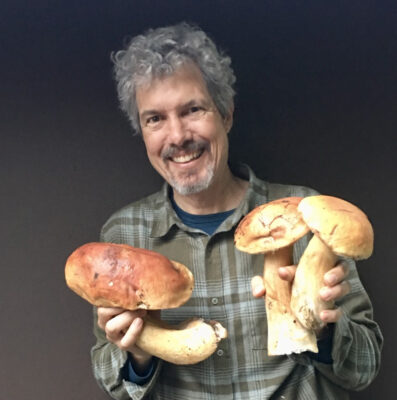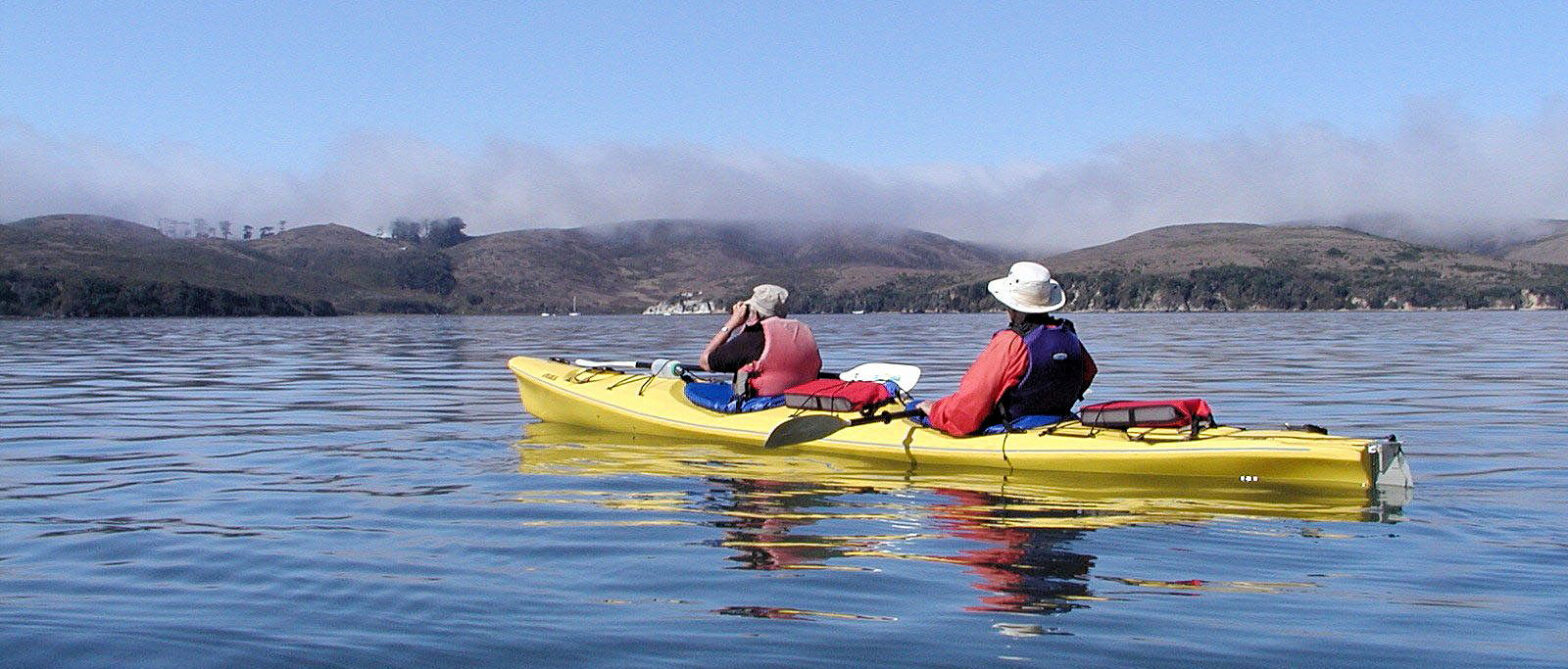On this clear, cold morning, I am standing on the sandy shore of Tomales Bay near Inverness. The bay is remarkably glassy. Hordes of waterfowl swim within a few hundred meters out on the bay. For as solid and blocky as I feel, the wigeons, scoters, and scaup are liquid. They dodge and bob on bright ripples. They squabble and dive; they give chase, show off, and splash.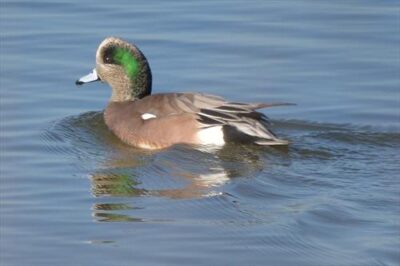
They make me laugh and I prepare to push off in my kayak with my companion. The wheezy whistles of nearby American wigeons beckon. In two minutes, that gap closes as I skootch out and slide into their world. I adjust my grip on my paddle, settle into my seat, and check for the third time that my binoculars are secure around my neck. I merge and gently paddle out to explore.
Being down low with the birds in their element allows me to feel a kinship with them. Out on the water, the sounds envelop me: the whisper of the slight breeze, the pop-pop-popping of scoter wings, more wigeon whistles, the concert murmurs of scaup and bufflehead, and the jeering of a red-shouldered hawk on a nearby power line. I see a surf scoter pop up with a small mussel in its beak, which it then swallows whole.
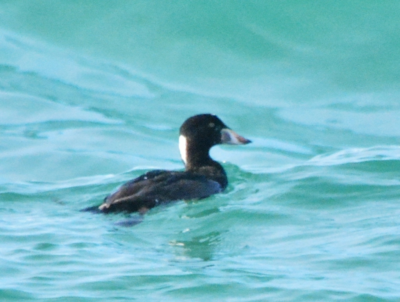
I find a rhythm with my stroke and head north up the bay, away from the road noise. Staying within 50 meters from shore, I can see and hear both land birds and water birds. My companion finds a bed of aggregating anemone on the rocks near Shell Beach, like a colony of squishy brown buttons. Orange lichens and crabs dot the shoreline rocks. Flitches of sword ferns wave in the breeze and a black phoebe escorts us for several yards. We catch glimpses of a spotted sandpiper, leggy willets, and several dozen of their tan-colored, common companions, marbled godwits, with their long beaks ideal for probing soft-bodied invertebrates out of the mud.
We get close looks at a couple of common loons nearby, by far the largest of the swimming birds we will see. With their enormous dagger-bills and thick, black neck bands they are easy to ID. We paddle past a cluster of bufflehead, one of the smallest of our winter ducks, but also one of our showiest. The males are bright white on most of their body with a purplish iridescent head and white cheek patch. As even casual birders know, ducks sport some of the flashiest colors in the bird world on some of their feathers, from the green heads of mallards and shovelers, to the bright blue and green wing feathers of many different species, such as green-winged and cinnamon teal.
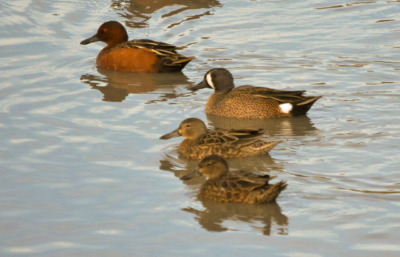
Some days on the bay, one might be lucky to see a bald eagle or two as they cruise around looking for fish, either to catch or steal. We don’t see any this day but we do observe a peregrine falcon making the rounds. Explosive scatterings of ducks often reveal a peregrine’s presence before I see it myself. Every day is a treasure hunt on the water, and every day is a blessing. A kayak on the bay in winter is like the wardrobe to Narnia: it is a doorway to an almost mystical world of color, discovery, and drama. In addition to tens of thousands of geese, ducks, and other waterfowl, you just never know what you might see, such as river otters, a bald eagle, a wayward sea turtle or sea otter, and you might even make some new friends in this rich ecosystem of bounteous life.
Blue Waters Kayaking is eager to help you immerse yourself into this world. We offer guided birding-by-kayak tours with featured naturalists including David Wimpfheimer, myself, and others. We provide the boat and standard kayaking gear. You provide any extra gear you might want – binoculars or a camera. I look forward to seeing you out there. I’ll be the one with the big smile on my face whistling to the wigeons.
MORE INFORMATION ABOUT BIRDING BY KAYAK TOURS
